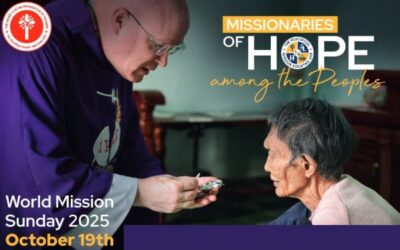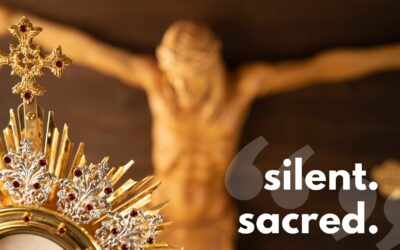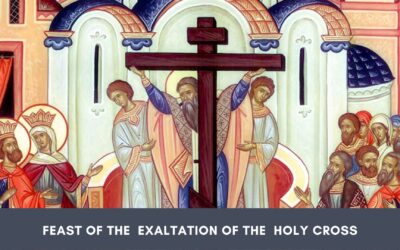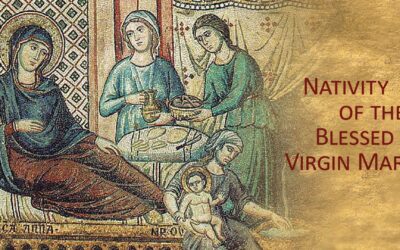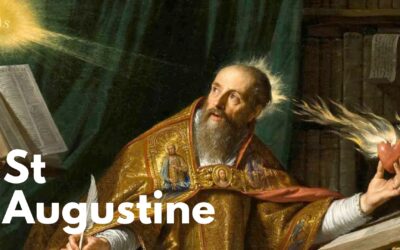A Message from Father Nathan
My dearest people closest to my heart!
God bless you and your generous heart
St. Benedict
Father of monasticism. Patron Saint of Europe. Protector.
St. Benedict is the patron saint of a wide variety of people and needs, including: against poison, agricultural workers, civil engineers, the dying, those afflicted with fever, those with gallstones, those with inflammatory diseases, those with kidney disease, members of religious orders, monks, schoolchildren, and spelunkers (cave explorers).
I do love and would die for St. John Paul II; he is one of my favorite popes. No pope heads the Church without reason, but there are a few who make a great impression in our lives, one among them would be Benedict XVI. To me, he is the model of humility that we have witnessed in our times.
His real name was Joseph Alois Ratzinger, but he chose St. Benedict as His patron and papal name, hence that pushed me to search for the greatness of St. Benedict, whose feast we celebrate this week.
Who was St. Benedict?
St. Benedict was born (ca 480 AD) into Roman nobility in Nursia, central Italy, roughly 100 miles northeast of Rome. His father was a perfect (chief magistrate) for the Western Roman Empire, which had fallen to the barbarians a decade prior to his birth. He had a twin sister Scholastica, who also became a saint.
As a youth, Benedict was sent to Rome for studies. However, he quickly became disillusioned by the prevalent immorality and disorder, particularly among his classmates. At the age of twenty, to find peace in his soul and avoid the traps that had ensnared many of his peers, he moved to the countryside of the town of Affile, about forty miles from Rome.
Accompanying him was his nurse who cared for him like a mother. They moved in with some virtuous men in the Church of Saint Peter. While there, his nurse accidentally broke a dish used to sift wheat and was distraught. Witnessing this, Benedict miraculously mended the dish and returned it to her. News of this miracle spread quickly, and Benedict became the talk of the town.
Benedict wasn’t interested in the praise of men; he sought only holiness. Leaving his nurse behind, he moved closer to the town of Subiaco and took up residence in a cave. Nearby, he met a holy monk, Romanus, who Benedct consulted for spiritual advice. At Romanus’ encouragement, Benedict took on the monastic habit and lived in the cave for the next three years as a hermit.
Romanus visited him frequently, bringing him food as needed. As a hermit, Benedict prayerfully sought to root out all sin in his life, especially three temptations common to most men:
“the temptation of self-affirmation and the desire to put oneself at the center, the temptation of sensuality and lastly the temptation of anger and revenge”
(Pope Benedict XVI, General Audience, April 9, 2008)
After having conquered these temptations, Benedict was invited by a group of local monks to become their abbot. He reluctantly agreed, recognizing that his form of religious life contrasted sharply with theirs. After a brief time as abbot, the monks so opposed him that, according to legend, they attempted to kill him by poisoning his wine. When Benedict blessed the wine, the glass shattered, and the scheme was revealed.
Shortly afterward, Benedict left the monks and returned to his cave before emerging to found monasteries in the area over the following years. Many admired him and were attracted to his radical way of living, while others envied him and sought his life. Numerous miracles are said to have taken place through his intervention, such as raising a monk from the dead, healing a boy, foreseeing future events, multiplying food and wind, expelling demons, and walking across the water.
After founding twelve small monasteries in the Subiaco area, Benedict felt it was time for a fresh start. One of the local priests had tried to poison him and was relentless in his persecutions. He even sent a naked woman to one of Benedict’s monasteries to tempt him and the monks. In addition to this persecution, some monks found his way of life challenging, and the locals were more taken with the stories of his miracles than with his devotion to God.
Therefore, he moved about sixty miles southeast to the mountaintop of Monte Cassino, where at the age of 50, he founded his most famous monastery. He built lots of monasteries and formulated regulations for the same. St. Benedict was not only the father of monasticism but also the father of modern Europe, given the influence that monasteries using his rule have had on Europe and world as a whole. For this reason, Pope Paul VI declared St. Benedict the patron saint of Europe in 1964.
He continues to intercede for the church.
With lots of love and blessings,
Ever wanting to be faithful to your service,
— Fr. Sahayanathan Nathan
Set up Online Giving.
You can make a one-time donation or set up recurring gifts.
Join our Parish Family
Register in the parish, so that it’s easy to become a confirmation sponsor or Godparent.
Want to Lend a Helping Hand?
Find volunteer opportunities and share your talents.
Need a Helping Hand?
We are here to help. Request home visits, send a prayer request. For urgent needs call 954.943.3684
Past Messages from Father Nathan
From The Desk Of Father Nathan | September 28, 2025
World Mission Sunday | Sun, Oct 19, 2025
—”Missionaries of Hope Among All Peoples”
Growing up as a child is still very fresh in my memory. When I think of the month of October, I think of World Mission Sunday. In my childhood community, there will be lots..
From The Desk Of Father Nathan | September 21, 2025
A sacred space for soul-to-soul dialogue with our Lord Jesus Christ. Silence in the church is not an empty quietness—it is a sacred stillness where we allow God to speak to our hearts.
From The Desk Of Father Nathan | September 14, 2025
Feast of the Exaltation of the Holy Cross – September 14th. This feast is celebrated every year on September 14th and recalls three historical events: The finding of the True Cross by Saint Helena, the mother of the emperor Constantine, The dedication of churches built by Constantine on the site of the Holy Sepulcher and Mount Calvary, The restoration of the True Cross to Jerusalem by the emperor Heraclius II.
From The Desk Of Father Nathan | August 31, 2025
Nativity of our Blessed Mother – September 8th. A traditional Indian Celebration will be held on September 6th (Saturday) at 6:00 p.m. Mass will be celebrated at St. Gabriel following the traditional way of honoring our Blessed Mother, taking her on a decorated chariot…
From The Desk Of Father Nathan | August 24, 2025
The feasts of St. Monica and her son, St. Augustine. Their life as mother and son sets an example for all of us to follow in our family lives…
From The Desk Of Father Nathan | August 17, 2025
Thank You for My Birthday Celebration. Last week, before my birthday, my little niece, with all the innocence and concern of a child, went to her mother and said, “I feel bad for Uncle Father Nathan. Uncle is all alone. There is no one to celebrate his birthday with him.” She said it because I am far away from my family home, and in her

